
Berthe Marie Pauline Morisot was a French painter and a member of the circle of painters in Paris who became known as the Impressionists.
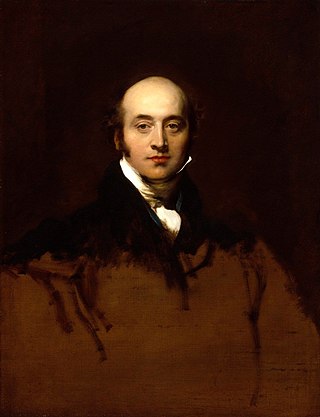
Sir Thomas Lawrence was an English portrait painter and the fourth president of the Royal Academy. A child prodigy, he was born in Bristol and began drawing in Devizes, where his father was an innkeeper at the Bear Hotel in the Market Square. At age ten, having moved to Bath, he was supporting his family with his pastel portraits. At 18, he went to London and soon established his reputation as a portrait painter in oils, receiving his first royal commission, a portrait of Queen Charlotte, in 1790. He stayed at the top of his profession until his death, aged 60, in 1830.

John Constable was an English landscape painter in the Romantic tradition. Born in Suffolk, he is known principally for revolutionising the genre of landscape painting with his pictures of Dedham Vale, the area surrounding his home – now known as "Constable Country" – which he invested with an intensity of affection. "I should paint my own places best", he wrote to his friend John Fisher in 1821, "painting is but another word for feeling".

Lucian Michael Freud was a British painter and draughtsman, specialising in figurative art, and is known as one of the foremost 20th-century English portraitists. He was born in Berlin, the son of Jewish architect Ernst L. Freud and the grandson of Sigmund Freud. Freud got his first name "Lucian" from his mother in memory of the ancient writer Lucian of Samosata. His family moved to England in 1933, when he was 10 years old, to escape the rise of Nazism. He became a British naturalized citizen in 1939. From 1942 to 1943 he attended Goldsmiths College, London. He served at sea with the British Merchant Navy during the Second World War.

The National Portrait Gallery is a historic art museum between 7th, 9th, F, and G Streets NW in Washington, D.C., in the United States. Founded in 1962 and opened to the public in 1968, it is part of the Smithsonian Institution. Its collections focus on images of famous Americans. The museum is housed in the historic Old Patent Office Building, as is the Smithsonian American Art Museum.
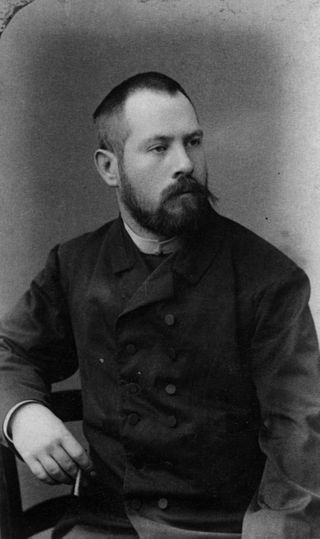
Lovis Corinth was a German artist and writer whose mature work as a painter and printmaker realized a synthesis of impressionism and expressionism.
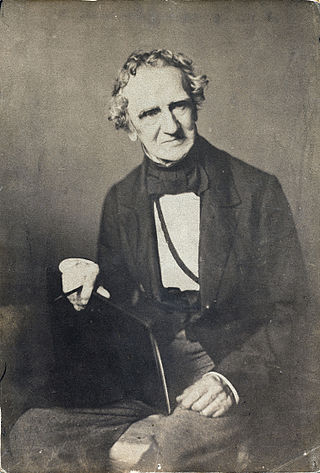
Thomas Sully was an American portrait painter in the United States. Born in Great Britain, he lived most of his life in Philadelphia, Pennsylvania. He painted in the style of Thomas Lawrence. His subjects included national political leaders such as United States presidents: Thomas Jefferson, John Quincy Adams, and Andrew Jackson, Revolutionary War hero General Marquis de Lafayette, and many leading musicians and composers. In addition to portraits of wealthy patrons, he painted landscapes and historical pieces such as the 1819 The Passage of the Delaware. His work was adapted for use on United States coinage.
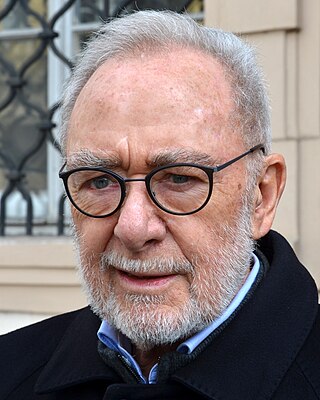
Gerhard Richter is a German visual artist. Richter has produced abstract as well as photorealistic paintings, and also photographs and glass pieces. He is widely regarded as one of the most important contemporary German artists and several of his works have set record prices at auction.
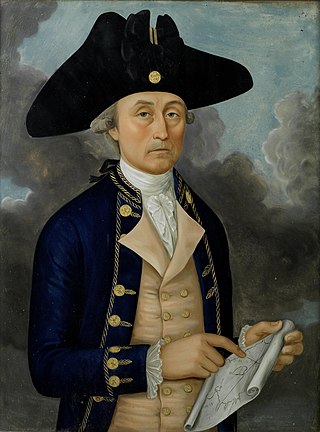
Reverse painting on glass is an art form consisting of applying paint to a piece of glass and then viewing the image by turning the glass over and looking through the glass at the image. Another term used to refer to the art of cold painting and gilding on the back of glass is verre églomisé, named after the French decorator Jean-Baptiste Glomy (1711–86), who framed prints using glass that had been reverse-painted. In German it is known as Hinterglasmalerei.
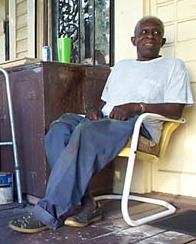
Moses Ernest Tolliver was an American artist. He was known as "Mose T", after the signature on his paintings, signed with a backwards "s."

The National Gallery of Armenia is the largest art museum in Armenia. Located on Yerevan's Republic Square, the museum has one of the most prominent locations in the Armenian capital. The NGA houses significant collections of Russian and Western European art, and the world's largest collection of Armenian art. The museum had 65,000 visitors in 2005.

John Wollaston was an English painter of portraits who was active in the British colonies in North America for much of his career. He was one of a handful of painters to introduce the English Rococo style to the American colonies.

Thomas Barker or Barker of Bath, was a British painter of landscape and rural life.
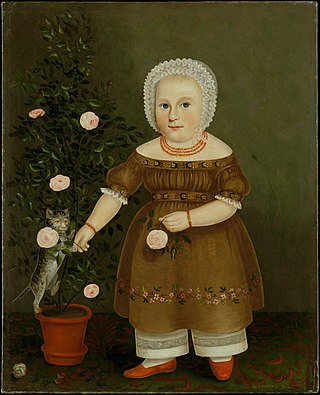
John Bradley was a British-born American artist who was active in the New York area in the 1830s and 1840s. He is primarily known for his portrait paintings, which are held in several North American museum collections.

Matthew Pratt was an American "Colonial Era" artist famous for his portraits of American men and women. He was born in Philadelphia, Province of Pennsylvania to goldsmith Henry Pratt, (1708–1748) and Rebecca Claypoole, (1711–1762), he was the second of eight children born to the Pratts.

Dismissal of School on an October Afternoon was painted by Henry Inman. An elected founding member of the National Academy of Design, Inman was well known in the New York City art scene. Although predominately known for his portrait paintings, Henry Inman was also known for painting genre scenes and literary subjects. Commissioned by James Cozzens, this painting was finished on November 8, 1845, which makes it his last completed painting before his January 1846 death. It is a culmination of his successful career, as it is a blend of landscape, genre, and literary reference.
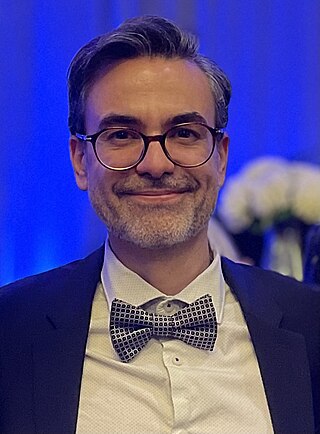
Luis Álvarez Roure is a Puerto Rican realist painter based in New Jersey. He is known for his figure paintings as well as his portraits of American public figures such as Philip Glass, Joshua Bell, Paul Volcker, Cándido Camero, Monsignor William Linder, and Octavio Vázquez. His strengths have been described as "his draftsmanship (...) taken directly from the paintings of past masters" and "the empathy he so evidently feels with his sitters" by Peter Trippi, editor-in-chief of Fine Art Connoisseur Magazine.

Richard Norris Brooke was an American painter known especially for his genre scenes depicting African-American subjects. He has been described as "first among several artists who brought a national distinction to the Washington art community, and who were instrumental in making it more professional through the establishment of schools, clubs, and exhibitions."

James Alexander Simpson was an American painter, best remembered today for his long association with Georgetown University.

Conversation Piece at the Royal Lodge, Windsor is an oil-on-canvas painting by Herbert James Gunn. It is part of the collection of the National Portrait Gallery (NPG) in London. The painting depicts King George VI and Queen Elizabeth and their daughters Princesses Elizabeth and Margaret taking tea in the Royal Lodge in Windsor Great Park. It was commissioned by the NPG in 1950.




















